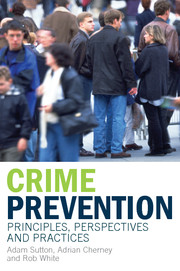5 - Evaluating crime prevention
from PART 1 - THEORY
Summary
Introduction
This chapter will discuss the following topics:
the strengths and weaknesses of various evaluation methodologies;
the need to use multiple and varied evaluation methods;
capturing context-relevant factors within crime prevention evaluation;
promoting an evidence-based approach to crime prevention policy and practice;
building capacity around evaluation and evidence-base practice; and
evaluating the ‘political’.
It is clear from preceding chapters that evaluation and accountability are an important part of crime prevention. If a key component of crime prevention is to enable governments to win support for a shift away from ‘law and order’ and to support local initiatives that do so, it is essential that strategies and programs are able to demonstrate that their ‘alternative’ crime prevention investments are ‘producing results’. Evaluation also provides the basis for an evidence-based approach which can help inform future policy developments. However, evaluation is a challenging task. There are divergent opinions on how evaluation ought to inform crime prevention planning and the types of evaluation methodologies that should underpin an evidence-based approach (Davis 2004; Pawson 2006; Pawson and Tilley 1997; Sherman et al. 2002, 2006; Spencer et al. 2003).
As noted, some forms of crime prevention (particularly social) work best when ‘embedded’ in other programs (e.g. education, family support, employment creation) whose ostensible purpose is not preventing crime.
- Type
- Chapter
- Information
- Crime PreventionPrinciples, Perspectives and Practices, pp. 70 - 90Publisher: Cambridge University PressPrint publication year: 2008



